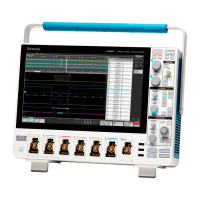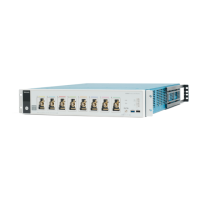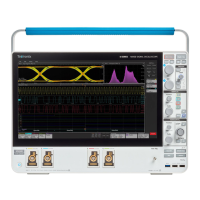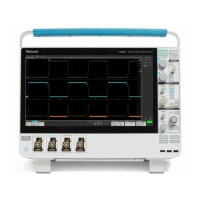The Holdoff setting range is 0 s (minimum holdoff available) to 10 s (maximum holdoff available). For more information on how to set
holdof
f, see Set Trigger Holdoff on page 85.
Learn about Trigger coupling
Learn about Trigger modes
Trigger coupling
Trigger coupling determines what part of the signal is passed to the trigger circuit. Edge triggering can use all available coupling types: DC,
Low Frequency Rejection, High Frequency Rejection, and Noise Rejection. All of the advanced trigger types use DC coupling only.
• DC. This coupling passes all input signals to the trigger circuitry.
• HF Reject. This coupling attenuates signals above 50 kHz before passing the signal to the trigger circuitry.
• LF Reject. This coupling attenuates signals below 50 kHz before passing the signal to the trigger circuitry.
• Noise Reject. This coupling provides stable triggering by increasing the trigger hysteresis. Increased hysteresis reduces the trigger
sensitivity to noise but may require greater signal amplitude.
Trigger slope and level
The slope control determines whether the instrument finds the trigger point on the rising or the falling edge of a signal. The level control
determines where on that edge the trigger point occurs. See the next figure.
Learn about trigger position
T
rigger position in waveform record
Trigger position is an adjustable feature that defines where the trigger occurs on the waveform record. It lets you choose how much the
instrument acquires before and after the trigger event. The part of the record that occurs before the trigger is the pretrigger portion. The
part that occurs after the trigger is the posttrigger portion. A longer posttrigger period may be useful when you want to see the effects an
event has on your system under test.
Pretrigger data can be valuable when troubleshooting. For example, if you are trying to find the cause of an unwanted glitch in your test
circuit, you can trigger on the glitch and make the pretrigger period large enough to capture data before the glitch. By analyzing what
happens before the glitch, you may uncover information that helps you find the source of the glitch.
Triggering concepts
2 Series MSO MSO24 and MSO22 239
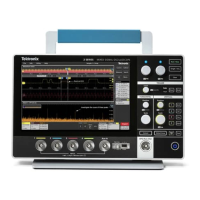
